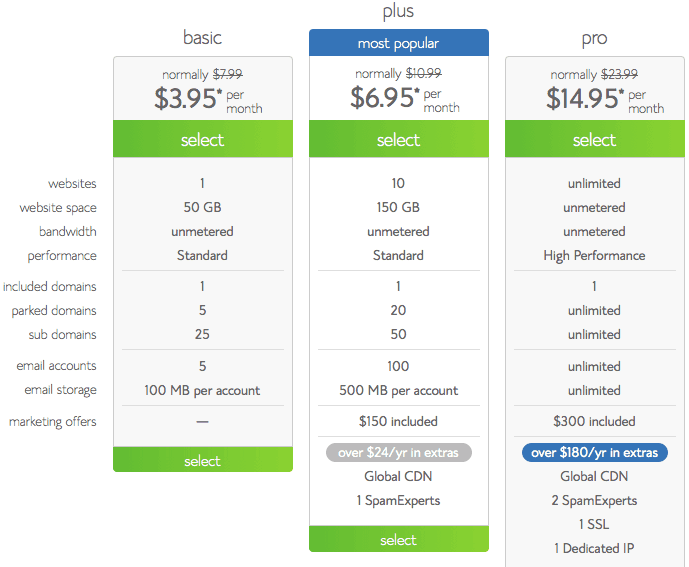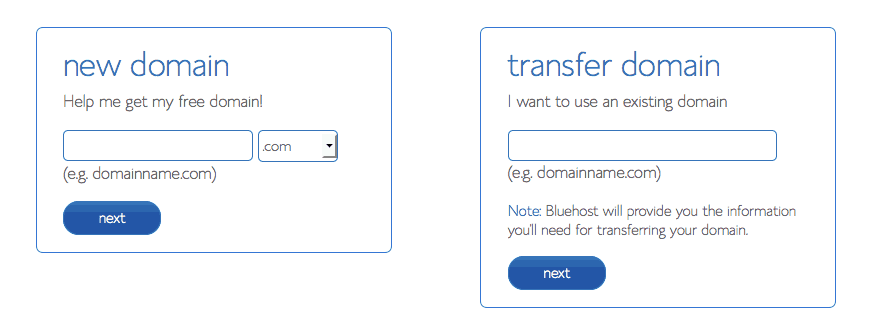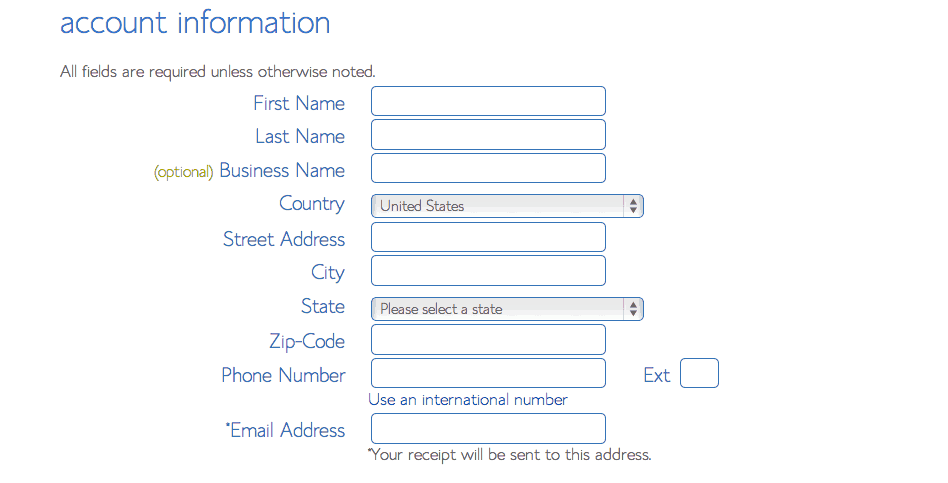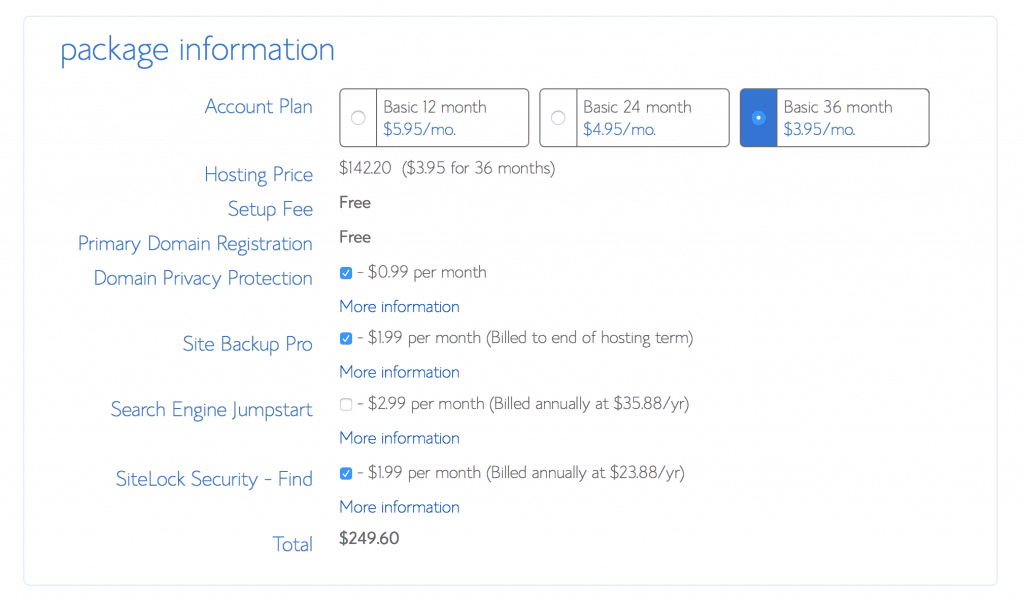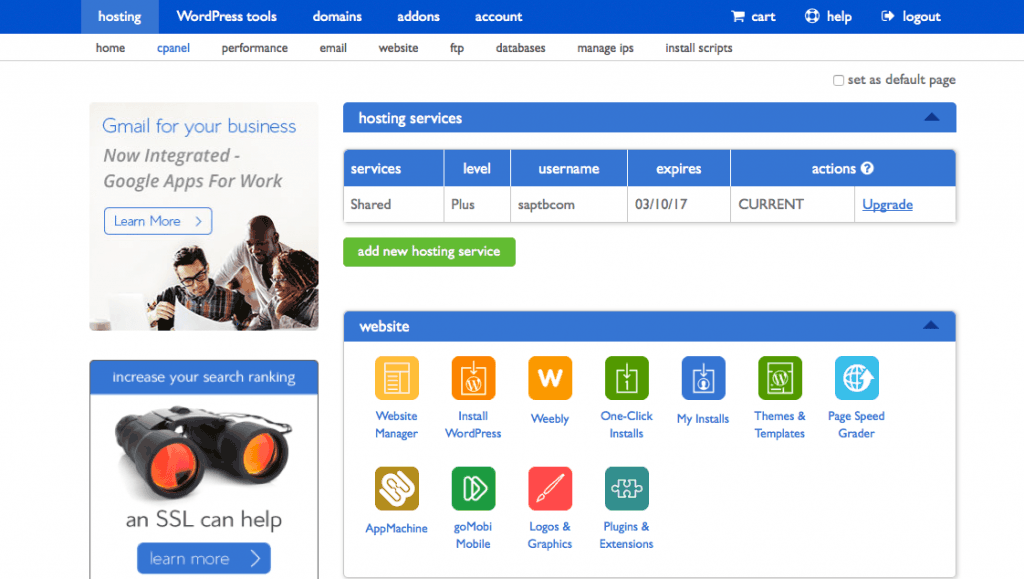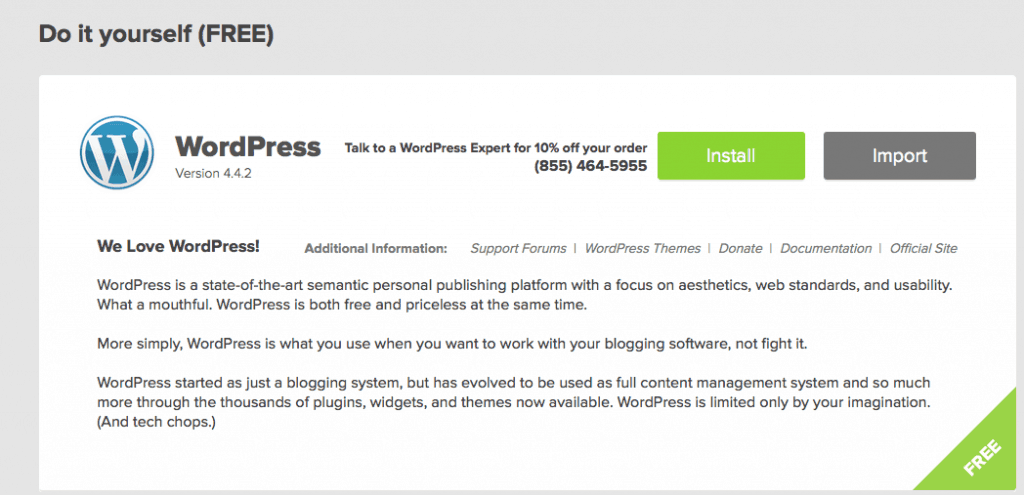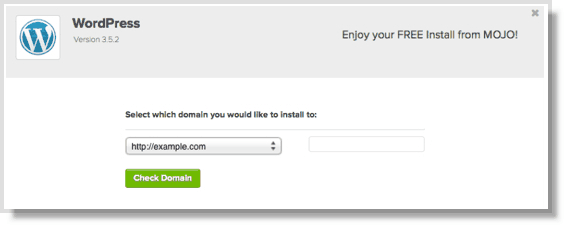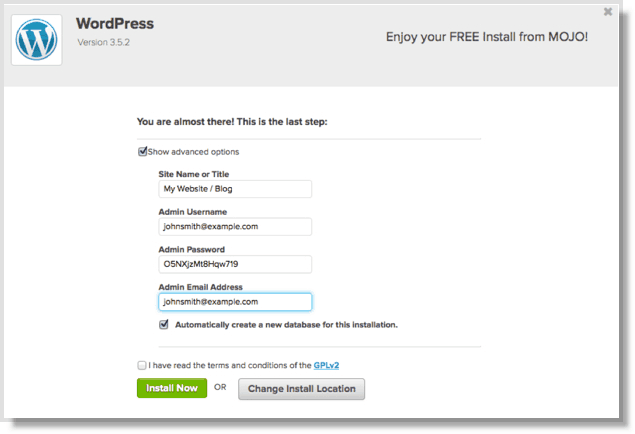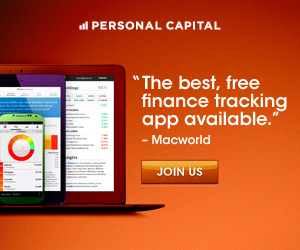Blogging has been one of the best ways to accelerate my path towards financial freedom. Over the past few years of my blogging career, I’ve reported an extra five-figures of additional earnings annually on my tax return – and it’s all been thanks to blogging!
As a hobby, starting a blog has been a fun, interesting, and productive way for me to spend my time. Honestly, outside of enjoying time with my family, I can’t think of a better way to invest my free time.
Over the years, I’ve not only done what I think will help other people, but it’s also done an incredible amount to help me out as well. It’s made me into a better writer and communicator. More importantly, the readers have brought me a tremendous amount of valuable information.
Because of the readers, I’ve learned about incredible early retirement strategies such as using 72(t)’s, Roth IRA conversions, tax avoidance, dividend investing, and a whole lot more! I think you’ll be very surprised at how much you’ll gain from this whole blogging experience.
If you’re where to start your blog, then I’ve got an easy and cheap solution: Bluehost. Bluehost is an awesome all-in-one web service package that gives you:
- A free domain name
- Hosting service for 1 or more sites
- The ability to launch your new blog in minutes using WordPress
A complete tutorial on how to get started is below!
But first, let me show you just what an opportunity for making money online this whole blogging thing actually could be for …
Do Bloggers Really Make Money Online? – YES!
Believe me – I was too when I first got started with my own website. But then eventually the magic started to happen. Advertisers would reach out to me and offer crazy amounts of money. One time someone paid me $600 to put an advertisement in the sidebar. Can you believe that? 10 minutes worth of work and $600 went into my Paypal account! That’s unbelievable!
But something that I’ve learned is that making money online is in no way unique at all. LOTS of people are cashing-in on this golden opportunity – literally! To prove it to yourself, all you have to do is Google “blog income reports” and you’ll see what I mean.
Here are just a few examples of what I’m talking about:
Pat Flynn of Smart Passive Income – $151,138 in just December 2016
Pat Flynn has somewhat established himself as pretty much the “it-guy” when it comes to making money online. He is very public and transparent about his blogging revenue, and you can find a great amount of details in his monthly income reports. Most of his revenue comes from affiliate marketing as well as podcast sponsorship, book sales, niche sites, speaking events, and software licensing.
Michelle Schroder-Gardner from Making Sense of Cents – $979,321 Total in 2016
Michelle’s personal finance blog has exploded over the past years into a six-figure per month empire. Most of her income comes from her affiliate relationships as well as her Making Sense of Affiliate Marketing Course.
Abby Lawson from Just a Girl and Her Blog – $41,700 in December 2016
Most of Abby’s income comes from affiliate promotions as well as her ebooks, eCourse, and printable planner pages.
Matthew Woodward – $22,760 in December 2016
Matthew makes the majority of his income from affiliate refers promoting useful blogging resources.
More Examples:
- Kristin Larsen from Believe in a Budget – $11,195 December 2016 from affiliate income, eCourses, and other products.
- Deacon Hayes from Well Kept Wallet – $6,089.48 in January 2017 from affiliate income ad networks.
- Sarah from The Frugal Millionaire Blog – $2,170.23 in January 2017 from affiliate income.
- Gretchen from Retired By 40 Blog – $3,328 in December 2016 from ad and affiliate networks.
Need I say more?
Each of these people was once just like you … looking at a computer screen and wondering if this blogging thing was really for real or not. Lucky for them, they took the plunge and made it happen. And it can for you as well! Don’t miss this opportunity to start something huge!
Here’s where to begin …
How You Can Easily Start Your Own Blog
Convinced yet? Hopefully after hearing about all those different ways to make from blogging, you’re more excited than ever to finally get started.
But we haven’t even gotten the best part yet …
Setting up a blog from scratch is pretty darn painless and easy to do!
I’m not kidding. In the next section, we’re going to go through how to start your blog using one of my favorite website services: Bluehost.
I’ve tried out a lot of different website hosting companies, and I’ve got to say that BY FAR Bluehost was the best combination of easy-to-use and low price. As you’ll see below, there is literally 5 minutes of work between going from zero to having your website up and running.
Let’s get started!
Step 1- Click over to Bluehost
Note that the price fluctuates all the time depending on what kind of sale or promotion they are running.
Step 2- Select your plan
I personally like the “plus” plan because then I can share multiple websites under the same hosting account. That saves you a bundle! However, if you’re budget conscious, the “basic” plan will also work just fine.
Again, note that the prices and package contents may be different depending on the sale at the time.
Step 3- Pick your domain name
Did I mention that all new hosting accounts come with a free domain name? Pretty great, huh? Go ahead and pick something fun and unique. Sorry, “mymoneydesign.com” is taken!
Step 4- Fill in your info
Step 5- Finalize your order
Choose any extra items you’d like to have such as registration privacy, file backup, and security protection. Place your order when you’re done!
Step 6- Setup WordPress
You’re in! Now you can start your blog by going under the “website” box (lower right hand) and clicking the “Install WordPress” icon.
Step 7- Click Install
Step 8- To “www” or not
Chose whether you’d like to have “www” in front of your domain or not. Honestly, it doesn’t really matter either way.
Step 9- Fill in your info with WordPress
Step 10- Time to blog!
Boom! Your blog is now happening! Wait a minute while it installs. Once it’s all done, you can login with your user name and password, and get started!
How to Setup WordPress
Now that your blog is for real, it’s time to start adding your own unique touch of personality to it!
Find & Install a Theme
By default, WordPress already comes with a pretty nice theme that is ready to use. However, if you’d like to find something a little more unique, you can go to Appearance / Themes / Add New to browse thousands of other free ones.
Below is really helpful video that will help you out.
As you get a little more advanced, you’ll notice that the free themes don’t have quite everything you’re looking for. That’s when it may be time to spend a few bucks and upgrade to a premium theme. This website and many of my other ones run on the StudioPress Genesis theme platform.
Fill In Your Info
Once you’ve got a theme you like installed, you can start entering in your official information such as the blog name, tagline, your name, etc. To do this go to Appearance / Customize. You’ll also want to go to Settings and fill in each of these forms as well.
Create An Exciting “About” Page
Tell the world who you are and what your blog is about! Go to Pages / Add New to create a static page. From a marketing perspective, it’s also a good idea to let people know what they can expect to get out of reading your blog too.
You can other one-off pages to your blog using this same method.
Get Organized with Menus
Make it easy for people to find stuff on your blog. Go to Appearance / Menus and organize your categories, sub-categories, and pages.
Categories can be setup under Posts / Categories.
Widgets – the Boxes on the Side of the Blog
You can add ads and other cool stuff by going to Appearance / Widgets and adding items to your header, sidebar, footer, etc.
One of the first widgets you’ll want to have: An email collector of subscribers. This will be VERY important for you and the financial opportunities of your blog as it grows.
Use Plugins to Do More Cool Stuff
One of the cool things about the way that WordPress works is that when your theme won’t do what you want it to do, you install something called a “plugin” to take care of.
Plugins are small programs that you install and add to your theme. They give your theme the ability to do things that they wouldn’t ordinarily do such as optimize your posts for SEO, add advertisements, improve site speed, share on social media, and much, much more.
To find and install them, just go to Plugins / Add New. Better yet, here’s a quick tutorial that will show you.
Here’s a quick run-down of the ones often. YES, they are all free!
- AddToAny Share Buttons. Allows your readers to share your posts via social media.
- Akismet. Keeps away annoying spam comments!
- Broken Link Checker. Checks your outbound links to make sure they still work. Broken links are bad for SEO.
- CommentLuv. Allows your readers to link back to a post on their website.
- Contact Form 7. Simple contact form.
- Display Widgets. Useful for picking and choosing which widgets you see.
- JetPack. Full of tons of good stuff.
- Growmap Anti Spambot Plugin. Also helps keep away the spammers and bots.
- Limit Login Attempts. Helps protect against hackers.
- Permalink Finder. Redirects your invalid URL’s to a working page so that the readers doesn’t get the annoying 404 page not found page.
- Quick Adsense. Lets you easily put Google Adsense ads (and others) where you want on your blog.
- W3 Total Cache. Helpful for keeping your site running lean and mean.
- WordPress Importer. Lets you easily receive blog posts from guest posters or other blogs.
- WP Smush. Reduces the size of your images so that your site runs faster.
- WP-Optimize. Another plugin designed to help maintain your blog and keep it running smoothly.
- Yet Another Related Posts Plugin. Automatically adds related posts to the bottom of every article.
- Yoast SEO. An absoute must have – optimizes every post for awesome SEO.
WordPress has literally thousands of free plugins that you can try. Just like with Themes, there are also premium ones that you can buy. Personally, I’ve always done just fine with the free ones.
Don’t go too crazy installing too many. It will bog down the speed of your website and decrease your SEO.
Writing Blog Posts
What few people realize is that this is one of the hardest parts of the whole process.
Why? Because content truly is king. You can do some things to help yourself promote your website and make a name for yourself. But your content will always be the foundation. Without really good stuff, no one is going to care to come back to your site and read more.
So what can you do?
Don’t Worry About It!
Well, first off – don’t be scared! DON’T procrastinate by trying to make each and every post into something perfect. The truth is that most people aren’t very good anyways when they first start writing.
But they do get better over time! As with any skill or talent, writing takes a lot of practice. And every year that you write you’ll get better and better at it.
So don’t get hung up by making too big of a deal of it.
Keep a List
One of the things that has always helped me to keep original ideas flowing is to keep a list of ideas. This can be something as simple as scribbles in a notebook or something more organized such as a detailed Excel spreadsheet. Do what works for you.
Every time something pops into your head, write it down. I guarantee you’ll forget it later. That way, a week from now when you’re ready to publish, you’ll have plenty to work with.
Stay Inspired
The best way to find new things to write about is to keep your curiosity peaked. Always be looking for new ideas in forums and blog posts, and asking yourself “why” or “how”. Sometimes my best blog posts have been something I’ve read somewhere else and thought to myself: I’ve got my own spin on that or simply I could answer that question better!
Stick to a Schedule
Humans are creatures of habit. You’ll do better at writing if you carve out a specific time or times each week to draft your posts. On the other side, if you post every Monday, you can bet that your readers will get in a routine of coming back every Monday to look for your new stuff!
How Often Should I Post?
Post when it’s convenient for you. Despite what some people may tell you, there is no need to post every other day to build up your site. I can give you examples of blogs that post once per month and still get thousands of visitors per day.
Images
Pictures really help make any blog post a lot more esthetically enjoyable to look at. But you can get yourself into a lot of trouble if you just go on the Internet and beginning stealing anything you see. Assume everything on the Internet is under some type of copyright protection, and instead look for images you’d like to use on a royalty-free site or one with Creative Commons license. Here’s a few useful resources:
- Microsoft Clip Art
- FreeDigitalPhotos.net
- Flickr
- Wikipedia
- Canva
Remember that a common stipulation to using a free image is to put a simple link back to the source at the end of the post.
Getting the World to Notice You
You can write and publish the absolute best, funniest, most entertaining, and useful posts around. But if no one reads your stuff, then it will just get lost in the sea of billions of other blog posts out there.
Here’s how to not let that happen:
Make Friends
Get to know other bloggers in your niche. You can do this easily by visiting their sites and commenting on their posts. If you’re really interested, you could try reaching out them directly by email or social media.
Comment
Like the last suggestion, commenting on other blogs is also a good and easy way to simply “get your name out there”.
Use Social Media
Posting to Facebook or Twitter is an easy way for people to find and share your articles. Don’t forget about other ones like Pinterest, Linked In, Reddit, etc.
Newsletter
Remember your email list? Sending out a scheduled email is an easy way to stay connected to your readers.
Guest Post
When all else fails, why not get in front of someone else’s audience. Offering to write a free guest post is not only a great way to do this, but to also connect with other bloggers in your niche for future endeavors.
Just remember to make your guest post every bit as good as something you’d add to your own website!
10 Ways to Make REAL Money Blogging
How are they making money from their websites?
1. CPC Ads
One of the easiest ways to get started making money from your blog is by putting up links to ads that pay you every time someone clicks on them. These are called CPC or cost-per-click ads. The best example and biggest network available is a platform called Google Adsense. With Google Adsense, all you do is put a few small snippets of code into your blog, and then sit back. Google handles EVERYTHING else! They attract the advertisers, negotiate the rates, and decide which ones to pop up on your screen.
You can earn anything from a few pennies to a few dollars everything someone clicks on one of these ads. In the beginning when your blog is new and there isn’t a lot of traffic, there naturally won’t be very many readers who will click on the ads. But as your blog grows and you attract a larger audience, there is a strong potential that you could make hundreds or even thousands of dollars each month!
Though this may not seem like a lot, I can guarantee that it can add up significantly over time. In my blogging career, I’ve came close to breaking the 4 figure per month threshold (and I’m still working at it). One blogger I read makes over five figures per month from his Adsense revenue.
2. Affiliate Marketing
CPC ads aren’t the only way you can get paid for advertising.
Another very popular method is to participate in affiliate marking. Affiliate marketing is when you promote a product and place a link to it on your site. When someone clicks that link and a sale is made, you get a commission! Depending on the product, the commission could be anything from a few dollars to tens or even hundreds of dollars.
For example, you’ll probably notice many personal finance blogs with reviews for various credit cards that have great rewards points or generous sign-up offers. Every time someone reads one of those review and applies for a credit card, they get a commission.
Now imagine if that commission was $100. All you would need are 10 conversions this month to pull in an extra $1,000.
Amazon Associates is one of the biggest affiliate programs available. With an affiliate link to an Amazon product, every time someone clicks on your link and makes a purchase (within 24 hours), you get a commission. The beauty is that the commission can be on ANY purchase; not just the product you linked to. With everything Amazon has available for sale, that’s a pretty wide range of possibilities!
Clickbank is a pretty useful resource for finding affiliate products to promote. Clickbank is full of various eCourses, software, and membership programs that cover a pretty diverse range of topics.
3. Private Advertising
Google Adsense and affiliate marketing is great for working with big-name advertisers. But don’t forget – there’s a whole world of smaller, private companies out there who also would love to be promoted.
This is where private advertising can be handy. With private advertising, a representative for the buyer will contact you and ask you to write a review or mention them in an upcoming post. You can then negotiate a rate to write this post and include a link back to their website.
Private advertising can easily bring in a few hundred dollars per month. But it does require more effort on your part to negotiate the sale, produce an article for review, and follow-up on payment.
4. Niche Sites
Niche sites are a very interesting way to leverage all the forms of advertising we discussed above.
With a niche site, the entire website is built around a very specific topic. A famous example of this was Niche Pursuits “Best Survival Knife” niche site. Every article supported the main theme of the website by reviewing various survival knives. The site earned anywhere from a few hundred to a few thousand dollars every month; all for promoting knives.
Spencer Haws, the gentlemen behind Niche Pursuits, famously quit his job when he built up a collection of niche sites that was earning more every month than what he was making at his day-job. Since then, he has inspired many other web marketers to start their own niche site adventures, including myself. As a matter of fact, you can read my entire archive (and learn a ton about blogging) at this link here.
5. More Than One Blog
What’s a really quick way to multiply your advertising revenue? How about running more than one website at a time!
With a shared hosting account with someone like Bluehost, it’s really easy and cheap to spend a few extra dollars to register a handful of additional domains and then run them all under the same hosting account at the same time for no extra cost.
6. EBooks
Blogging is a natural complement to writing and selling ebooks. It gives you a platform for establishing your brand. Through your blog, you’ve got an established flow of traffic, an email list of dedicated readers, and the credibility of authority in your niche.
On top of that, blogging also helps you build your voice and writing style. The frequent drafting and editing of your posts makes it that much easier to draft a +10,000 word ebook. As a matter of fact, many bloggers re-purpose their best and most popular blog posts as content for ebooks.
7. Coaching / Consulting
As your blog becomes more popular and you establish yourself as an authority in your niche, everyone will want to know the secret of your success! When that happens, you’ve got an opportunity to sell your services as a coach or consultant. For whatever fee you negotiate, buyers will be willing to pay you for your time to hear their problems and advise them on a solution.
There are many bloggers out there who have been solicited by their readers to help them with any number of topics: From money to blogging to life coaching. Neil Patel from the blog Quick Sprout is one prolific example of someone who has famously been consulting on web marketing since he was a teenager, and earning tens to hundreds of thousands of dollar per month in the process.
8. ECourses
What’s an excellent way to reach out to your readers and provide valuable consulting to hundreds of potential clients all at once? How about producing an eCourse!
With an eCourse, you can charge a nominal fee of anywhere from a hundred to a few thousand dollars per student, and then put them through a syllabus of different learning topics.
ECourses are generally designed to follow an automated sequence of topics that the student can complete at his or her own pace. They usually are made up of a combination of videos, emails, and blog posts. Of course, some of them can also include “live” elements such as webinars, Facebook chats, and forum threads so that the student gets a more personalized touch.
One famous example that comes to mind is Brian Dean from the website Backlinko. Backlinko started out as a very simple blog that was chucked full of advice on how to master SEO (search engine optimization). As the blog grew in popularity and Brian’s position as an authority in this subject expanded, he started offering eCourses that brought in six figure incomes each time he opened up a new session!
9. EProducts
You can use your blog to promote lots of other products beyond just ebooks and ecourses. EProducts can be any kind of digital media that can be sold for a price. Examples may include DVD sets, workbooks, apps, software, etc.
One particular useful example (especially when it comes to blogging) is a software package called Long Tail Pro. Created by Spencer from Niche Pursuits, it was founded as he was getting better and better at predicting what factors to target in SEO to get his niche sites to rank better. Eventually Spencer got the idea to package all of that knowledge into a keyword research tool that he could sell to other people to use. Web marketers looking to improve their own SEO began using the software, and Long Tail Pro has since exploded into a full-blown multi-partner business.
10. Speaking Events
As a popular voice and recognizable authority, blogging can also lend itself to speaking opportunities. Event coordinators and promoters know that they will attract more patrons if they’ve got someone that everyone wants to hear from give a speech or Q&A session about their topic.
Pat Flynn from the highly popular blog Smart Passive Income is someone who is often traveling to participate at various speaking engagements. As a respected web marketer and entrepreneur, Pat can often command several thousand dollars per engagement (which he publicly reports in his monthly income reports).
Don’t Forget to Have Fun!
Above all, the number one thing to remember throughout this process is make sure you’re having fun! Don’t burn yourself out trying to stick to a hectic schedule. You’ll just turn blogging from something fun into a full-time job, and it will become counter-productive in the long run.
Instead, keep on using this experience to learn and connect with other people. You’ll be very surprised at the things you’ll pick up if you’re willing to listen!
Featured image courtesy of FreeDigitalPhotos.net




